POLAR LOW - TYPICAL APPEARANCE IN VERTICAL CROSS SECTIONS
by KNMI
19 March 2001/16.50 UTC - NOAA CH4 image; position of vertical cross section indicated. A developing polar low south
west of Svalbard
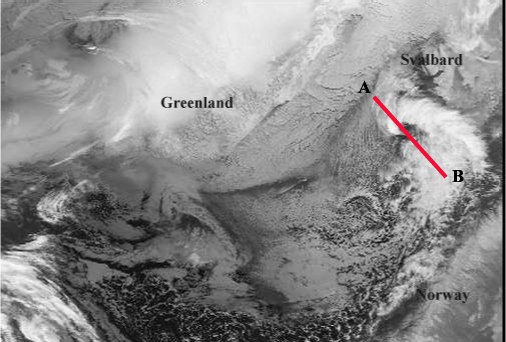
- ThetaW
During the developing phase a baroclinc zone in the potential wet bulb temperature (ThetaW) pattern is visible. Upstream of the Polar Low a shallow layer of cold air is pouring out over the sea.
This air is warmed up gradually by the relatively warm seawater, resulting in higher ThetaW values. - Vorticity advection
One of the main dynamical mechanisms in the initial or developing phase is Positive Vorticity Advection (PVA) caused by a moving upper level through. To trigger a Polar Low, a PVA maximum has to be superimposed upon the baroclinic zone. - Potential vorticity
Potential Vorticity (PV) is an important parameter in the develoment phase of a Polar Low. In this stage an upper level PV maximum is normally just upstream of a Polar Low.
This PV maximum is situated at mid lvels of the troposphere but has transferred down from the stratosphere.
A PV maximum can also be found in the gradient zone of the very stable layer of ThetaW near the surface over or near icefields. - Vertical Motion (Omega)
Upper level mechanisms result in negative omega. Negative omega above the Polar Low centre does not cover a deep layer because of a low tropopause and a stable upper layer.
ThetaW
|
19 March 2001/18.00 UTC - Vertical cross section; black: isentropes (ThetaE)
|
|
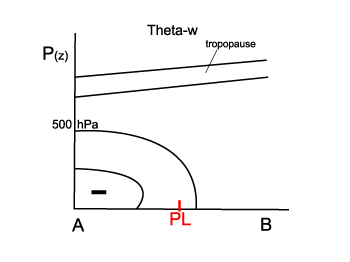
|
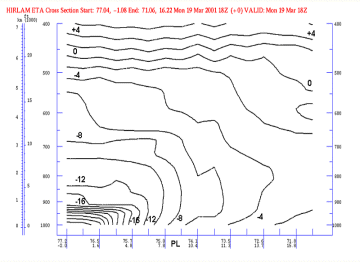
|
Vorticity advection
|
19 March 2001/18.00 UTC - Vertical cross section; green: vorticity advection - PVA, black: isentropes (ThetaE)
|
|
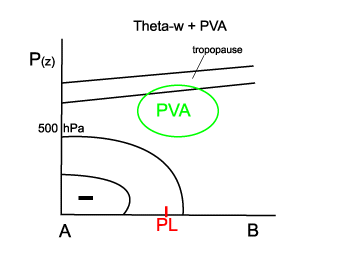
|
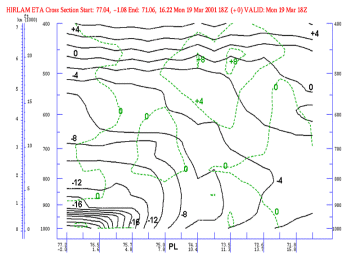
|
Potential Vorticity
|
19 March 2001/18.00 UTC - Vertical cross section; green: potential vorticity, black: isentropes (ThetaE)
|
|
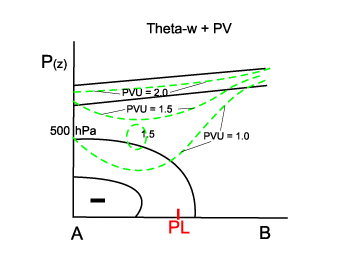
|
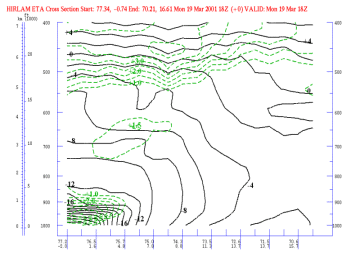
|
Vertical Motion (Omega)
|
19 March 2001/18.00 UTC - Vertical cross section; cyan: vertical motion (omega), black: isentropes (ThetaE)
|
|
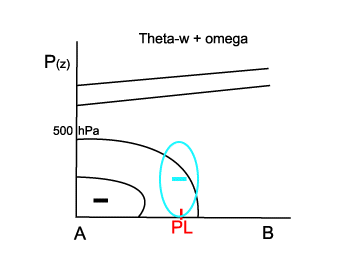
|
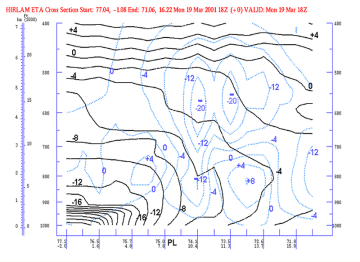
|
MATURE PHASE
20 March 2001/23.30 UTC - Meteosat IR image; position of vertical cross section indicated
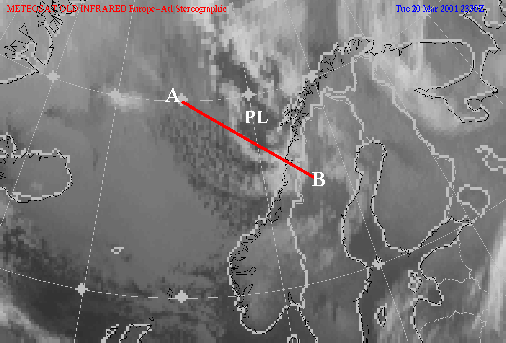
Vertical Motion (Omega)
In the mature phase, a deep layer of negative omega is surrounded by areas of positive omega. Although the ascending air motions are sometimes situated in an area of PVA and some warm advection, this negative omega can not be completely explained by these mechanisms alone. Convective instability is playing an important role too. The descending air motion to the rear of a Polar Low is often enhanced by cold air advection. Because of the relative small resolution of most operational models compared to the scale of a Polar Low, descending air motion at the centre of a Polar Low is difficult or impossible to see in a vertical cross section.|
21 March 2001/00.00 UTC - Vertical cross section; cyan: vertical motion (omega), black: isentropes (ThetaE)
|
|
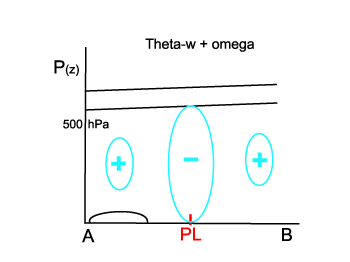
|
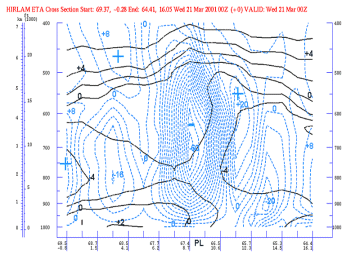
|


